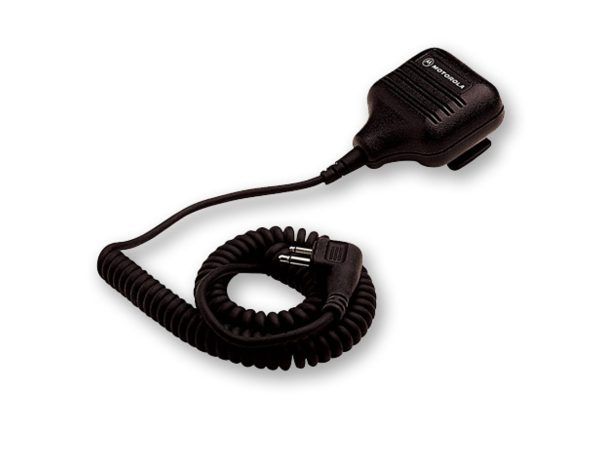What Does a Vape Detector Look Like? A Complete Guide for Schools and Businesses

Vaping has become a growing concern in schools, workplaces, and public spaces. While many consider it a safer alternative to smoking, the use of vapes indoors creates serious health, safety, and disciplinary issues. Because vape devices are small and easy to conceal, detecting their use is a challenge. That’s where vape detectors come in. These smart devices are specifically designed to identify vapor particles, smoke, and air quality changes associated with vaping.
In this guide, we’ll explore what a vape detector looks like, how it functions, and why schools and businesses are increasingly investing in them.
What Is a Vape Detector
A vape detector is an electronic device designed to sense the chemical compounds and particulates released when someone uses an e-cigarette or vape. Unlike traditional smoke detectors, vape detectors are built to detect vapor aerosols, nicotine, and THC compounds that standard alarms cannot recognize.
They are commonly installed in restrooms, classrooms, offices, and other enclosed areas where vaping is prohibited. These detectors serve as a preventive tool, discouraging vaping by alerting authorities when vapor is detected.
What Does a Vape Detector Look Like
Vape detectors are typically compact, discreet devices that blend easily into ceilings or walls. Most units resemble small smoke or carbon monoxide detectors, usually circular or rectangular in shape, measuring between four and six inches in diameter.
They are often white or light gray, making them less noticeable. Some models feature small indicator lights, while others are entirely unmarked for subtle placement. Many schools prefer detectors that look minimal to avoid drawing student attention.
Inside the casing are advanced sensors that monitor air composition. Some models also include sound sensors to detect loud noises or tampering attempts. Despite their simplicity, vape detectors are packed with cutting-edge technology that tracks even the faintest traces of vapor.
How Vape Detectors Work
A vape detector functions by analyzing the air for specific chemicals and changes in particle density caused by vapor. When someone uses a vape, tiny aerosol particles containing nicotine or THC disperse in the air.
The device’s internal sensors, such as laser-based optical sensors or chemical analyzers, detect these changes. When the sensor identifies a certain threshold of vapor concentration, it triggers an alert.
Modern vape detectors can send instant notifications to administrators through Wi-Fi or a connected security system. In schools, this often alerts principals or security personnel. In businesses, it may notify facility managers or safety officers.
Common Features of Vape Detectors
Most modern vape detectors come with several useful features to enhance their effectiveness. These may include:
- Vapor detection: The core function that identifies vape aerosols.
- Noise detection: Some units detect loud disturbances or shouting, useful for monitoring restrooms or isolated areas.
- Tamper alerts: The device can sense when someone tries to remove or damage it.
- Temperature and humidity monitoring: Helps improve accuracy and detect environmental changes.
- Cloud-based data logging: Allows administrators to review historical data and patterns of vaping activity.
These features make vape detectors powerful tools for maintaining a vape-free environment.
Where Vape Detectors Are Commonly Installed
Vape detectors are used in various locations where vaping is prohibited. The most common installation areas include:
- School restrooms and locker rooms: These are prime spots where students often attempt to vape in secret.
- Office restrooms and break rooms: Businesses install detectors to maintain indoor air quality and comply with smoke-free regulations.
- Public facilities: Airports, theaters, and malls may use detectors to prevent vaping in prohibited zones.
- Residential buildings: Property managers sometimes install vape detectors in shared spaces to protect air quality and reduce maintenance issues.
Placement is important for maximum efficiency. Vape detectors are usually installed on ceilings or high walls, where vapor naturally rises.
Vape Detectors vs. Smoke Detectors
Many people confuse vape detectors with traditional smoke detectors, but they serve very different purposes.
A smoke detector uses optical or ionization sensors to detect visible smoke from fires. It cannot identify vape aerosol, as vapor particles are much smaller and chemically different.
A vape detector, on the other hand, is designed specifically to recognize the compounds released from e-cigarettes. It can sense nicotine, THC, and vaporized flavoring chemicals even in small amounts.
In short, while a smoke detector is for fire safety, a vape detector is for air quality and rule enforcement. Both can coexist in the same building for complete protection.
The Importance of Vape Detectors in Schools
Schools across the world have seen a sharp rise in vaping among students. Despite strict rules, vaping often happens in restrooms or locker rooms where supervision is difficult.
Vape detectors have become an essential tool for educators and administrators. When a detector senses vapor, it immediately alerts staff, allowing them to respond quickly. This reduces vaping incidents and helps schools maintain a healthy, rule-abiding environment.
Beyond enforcement, the presence of detectors also acts as a strong deterrent. When students know detectors are installed, they are less likely to attempt vaping on campus.
Why Businesses Are Installing Vape Detectors
Businesses are also recognizing the value of vape detection systems. Many companies are adopting clean air policies and want to ensure compliance with smoke-free workplace laws.
Installing vape detectors protects employees and visitors from exposure to harmful chemicals. It also helps maintain a professional image by preventing unpleasant odors or indoor vaping habits.
For industries with sensitive environments, such as healthcare or manufacturing, even small amounts of vapor can interfere with equipment or contaminate air systems. Vape detectors help preserve both safety and productivity.
Choosing the Right Vape Detector
When selecting a vape detector, decision-makers should consider the environment, budget, and integration options. Key factors include:
- Detection accuracy: The ability to sense multiple compounds such as nicotine and THC.
- Connectivity: Some models offer Wi-Fi or Bluetooth notifications for instant alerts.
- Installation type: Ceiling or wall-mounted options may vary based on room design.
- Maintenance: The ease of calibration and cleaning ensures long-term performance.
- Data access: Cloud-enabled devices provide long-term reports for analysis.
By comparing brands and features, schools and businesses can find the right model for their specific needs.
Conclusion
Vape detectors are an effective and essential solution for maintaining safe, healthy, and rule-compliant environments. While they may look like simple ceiling sensors, their advanced technology provides powerful detection and real-time alerts.
For schools, vape detectors help protect students from developing harmful habits. For businesses, they preserve indoor air quality and regulatory compliance. Understanding what these devices look like and how they function allows administrators to make informed decisions about installation and policy enforcement.
As vaping continues to evolve, so too will vape detection technology, helping communities maintain cleaner, safer spaces for everyone.
FAQs
1. What does a vape detector look like?
Most vape detectors resemble small, white ceiling-mounted smoke alarms. They are circular or square and blend into their surroundings.
2. How can you tell if a vape detector is installed?
Look for small, discrete devices on ceilings or high walls. They may have a tiny LED indicator but often look similar to air sensors.
3. Do vape detectors make noise when triggered?
Most models send silent alerts to administrators through connected systems rather than producing audible alarms.
4. Can vape detectors detect regular smoke?
Some high-end models can detect both smoke and vapor, but most are designed specifically for vape aerosol detection.
5. Where should vape detectors be installed in schools or businesses?
They work best in restrooms, break areas, or other enclosed spaces where vaping is likely to occur. Proper placement improves accuracy and response time.
Also read: Understanding ShotPump Crypto: How It Works and Why It’s Gaining Attention











